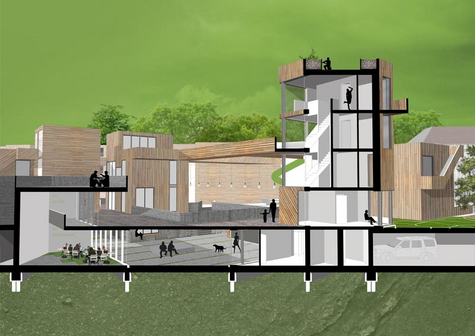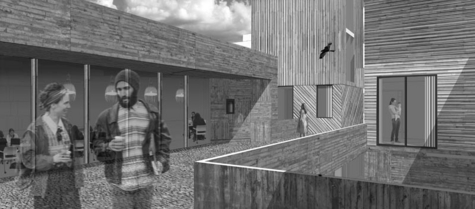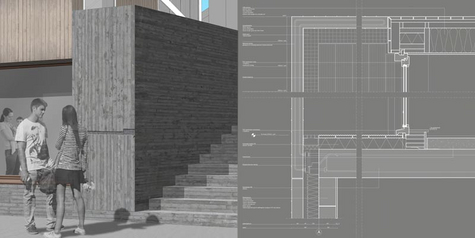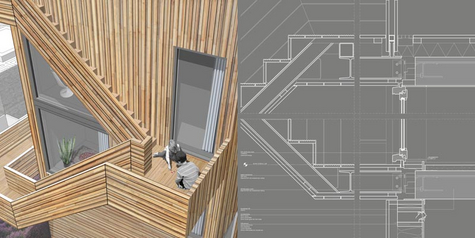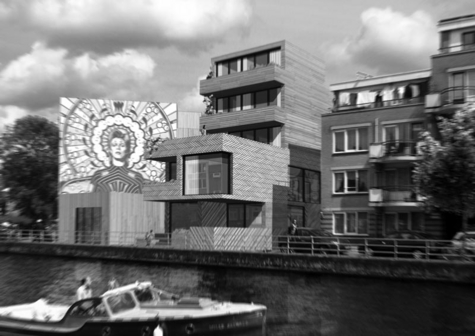Pieter van Roermund
- Course
- Architecture
- Class
- 2016
Ruimte voor de stad
Since 2008, there has been a visible change in the number of middle class families that live within the A10 ring road. The advantages of living in the city outweigh the associated disadvantages. This positive trend ties in with the municipal policy, in which the middle class are considered to be ‘the motor of the city’. In this respect, Amsterdam occupies a unique position internationally. Whereas other large cities deliberately allow capitalist gain to prevail, Amsterdam is speaking out against this and wants to actively devote itself to remaining a non-dual city and binding the middle class to the city. This project elaborates on this ambition. It offers middle class urban families – with or without children – housing and a living environment that is in line with their specific wishes. However, the design does more. It addresses a strategy that seeks to increase the density the city, as a result of which more public space is actually created and the local residents share in the added value that the project offers. The urban design concept if based on making parts of the inner courtyard of the (closed) housing block communal and even partially open to the public. This generic concept forms the first part of the graduation work and is specifically elaborated on during the second part.
On the scale level of the city, the design provides an answer that is in line with the direction as described by the municipality in the Structural Vision Amsterdam 2040, in which a densification, with the addition of 70,000 homes within the current building lines, is taken into account. The location for the developed part is the Bellamy neighbourhood. As stated in the presentation, there were a number of possible locations, but I know the Bellamy neighbourhood quite well and it has an extremely interesting urban design history, which provides a reason for the chosen interventions on various scale levels.
The design follows on from the urban planning concept – exploiting the inner courtyards of housing blocks – and consists of an informal network that is placed as superposition over the infrastructural network of the neighbourhood. Programme in inner courtyards, connected with each other through gates and informal passageways. In this way, it forms a network for the neighbourhood; something to be proud of and something that gives the Bellamy neighbourhood an identity, building on the history of the neighbourhood. My graduation work examines the elaboration of one of these spots in greater detail. A hybrid housing project within the Schimmelstraat, Korte Schimmelstraat, Jan Hanzenstraat and Tweede Kostverlorenkade block.
The design and the presentation examine three themes that play an important role:
• Densification with added value; densification provides something positive; offering instead of threatening opportunities. The design provides the new residents of the project with housing, but the living environment also provides quality that will ensure that the existing residents see its added value and participate in the project.
• Continuity and movement in the outdoor space. It is important precisely for the action radius of the young families to also have quality outdoor space in the direct vicinity of the home. In addition, it is also important that children will also discover the direct living environment, without being in danger.
• Attachment to the existing fabric. Inherent to the development of a section of the inner courtyard is the relationship with the existing buildings. How does old become attached to new and how is privacy handled when the informal rear side of the home suddenly borders the public space?
My graduation work ‘Space for the City’ is the result of a (long) search for the answer to the question of how I, as an architect, can offer good housing and an interesting living environment, which takes the requirements and wishes of the modern urban family into consideration and in which justice is done to the above-mentioned points for attention.
Commission members: Eric Frijters (mentor), Harald Mooij, Marcel van der Lubbe. Additional members for the exam: Herman Kerkdijk, Judith Korpershoek.

